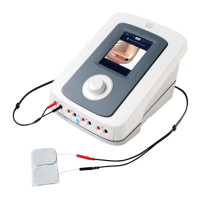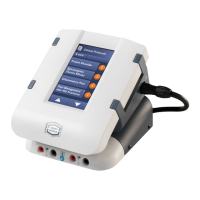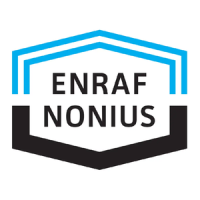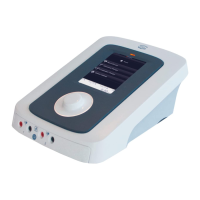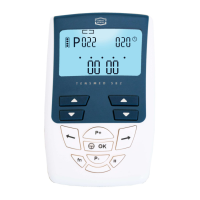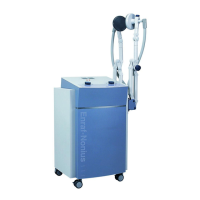Do you have a question about the Enraf Nonius Endomed 581 ID and is the answer not in the manual?
General safety, installation, and connection guidelines for the Endomed 581ID device.
Important safety information regarding potential interference with other medical equipment.
Details on combining the Endomed 581ID with other devices like Vacotron and Sonopuls.
Overview of the Endomed 581ID as a single-channel microprocessor-controlled unit.
Explanation of the unit's preprogrammed and programmable therapy programs.
Description of the various electrical current types offered by the Endomed 581ID.
Detailed explanation of the two-pole interferential current and its applications.
Details on potential equalization connection and main power supply connections.
Explanation of various indicators and parameters shown on the Endomed 581ID display.
Guides for diagnosing and resolving common fault conditions, including display errors.
Description of various keys and controls for program selection, parameter adjustment, and polarity.
Step-by-step guide on applying electrodes correctly for effective treatment.
Guidance on setting current intensity based on patient sensitivity and treatment stage.
Explanation of current density standards and safe application practices.
Steps for connecting cables and preparing the Endomed 581ID for operation.
Managing custom programs: storing, retrieving, and understanding the default Program 0.
Procedure for selecting and activating the device's pre-programmed therapy clusters and programs.
Guidelines for cleaning, maintaining, and disposing of the device and its accessories.
Guides for diagnosing and resolving common fault conditions, including display errors and output problems.
Operation of amplitude adjustment and emergency stop function for remote controls.
Using remote controls for pulse feeding, parameter adjustment, and amplitude control.
| Category | Medical Equipment |
|---|---|
| Type | Electrotherapy Device |
| Model | Endomed 581 ID |
| Manufacturer | Enraf Nonius |
| Display | LCD |
| Therapy Modes | Interferential, TENS |
| Pulse Width | 50-400 μs |
